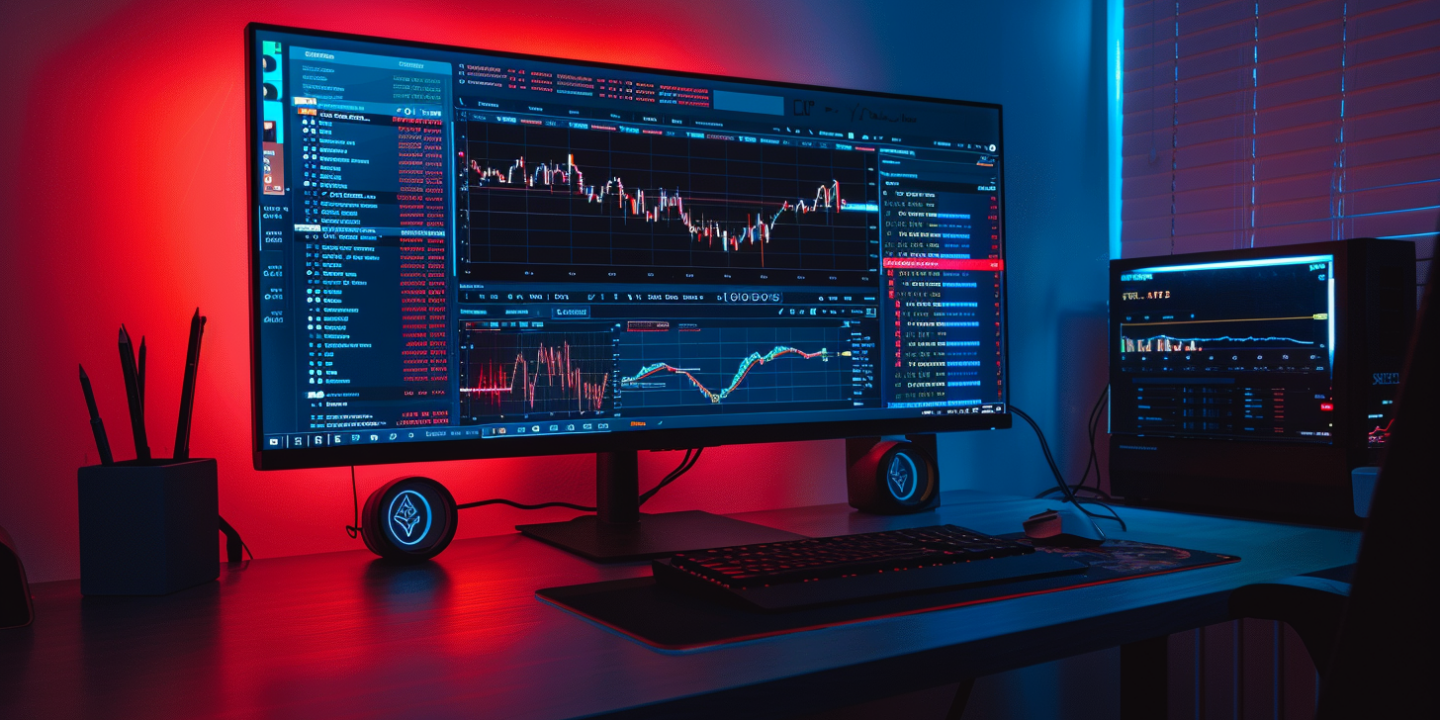
Crypto Scalping vs Swing Trading: A Comprehensive Comparison
In the fast-paced world of Crypto Trading, selecting the right strategy is crucial for success and financial growth. Scalping and Swing Trading are two popular styles, each with unique approaches and benefits.
Understanding these different Trading styles will help you align your strategies with their risk tolerance and market goals. This article explores the key differences between Scalping and Swing Trading, examining their techniques, advantages, and challenges to help you decide which strategy suits your Trading objectives best.
Key Takeaways
- What is Crypto Scalping?
- What is Crypto Swing Trading?
- Key Differences Between Scalping and Swing Trading
- Which Trading Style Suits You?
What is Scalping?
Scalping is a Trading strategy focused on making quick, small profits by executing numerous daily trades. Traders who employ this method aim to capitalize on minor price fluctuations, typically holding positions for only a few seconds to minutes.
Key Characteristics of Scalping
- Short Holding Periods: Positions are held briefly, minimizing exposure to market fluctuations.
- High Frequency of Trades: Scalpers make dozens or even hundreds of trades daily to accumulate gains from small price movements.
Tools and Techniques Used in Scalping
- Technical Analysis: Scalpers rely heavily on technical analysis to make quick decisions, analyzing past price movements and patterns.
- Chart Patterns: Identifying patterns such as flags, pennants, and triangles helps scalpers predict short-term price movements.
- Trading Indicators: Tools like Moving Averages, Bollinger Bands, and the Relative Strength Index (RSI) are commonly used to signal potential entry and exit points.
Pros and Cons of Scalping
- Quick Profits: Scalping will allow you to lock in profits from small price changes quickly.
- Less Exposure to Market Risk: Short holding periods reduce the risk of being affected by significant market movements or news events.
- High Stress: The need to make rapid decisions and execute numerous trades can be stressful.
- Constant Monitoring: Scalpers must constantly monitor the market and their positions, requiring significant time and attention.
Scalping is best suited for traders who thrive in fast-paced environments and can make quick decisions. While it can be profitable, the strategy also demands discipline, a strong understanding of technical analysis, and the ability to handle the stress of frequent Trading.
What is Swing Trading?
Swing Trading is a strategy for capturing gains in a financial instrument over days to weeks. Traders using this method seek to benefit from price “swings” within a medium-term trend, making fewer trades than those using Scalping.
Key Characteristics of Swing Trading
- Longer Holding Periods: Swing traders hold positions from several days to a few weeks, allowing them to capture more significant price movements.
- Fewer Trades Compared to Scalping: Swing traders make fewer trades, focusing on maximizing gains from each position.
Tools and Techniques Used in Swing Trading
- Technical Analysis: Analyzing price charts, trends, and patterns is essential for identifying potential entry and exit points.
- Fundamental Analysis: Evaluating the underlying factors affecting an asset, such as economic indicators or company earnings, helps make informed decisions.
- Chart Patterns and Trading Indicators: Tools like Moving Averages, Fibonacci Retracement, and MACD are used to spot trends and reversals.
Pros and Cons of Swing Trading
- Less Stress: With fewer trades and longer holding periods, swing trading is generally less stressful than scaling.
- More Time for Analysis: Traders have more time to analyze and plan their trades, which could lead to better decision-making.
- Higher Exposure to Market Risk: Holding positions overnight or for several days exposes traders to market risks, such as adverse news or events.
- Potential for Larger Losses: If the market moves against a swing trader’s position, the losses can be more substantial due to the longer holding periods.
Swing Trading is ideal for those who prefer a balanced approach. It offers ample time for analysis while still allowing for significant profit potential. However, to successfully trade the market, one must have a good understanding of both technical and fundamental analysis.
Key Differences Between Scalping and Swing Trading
Scalping and Swing Trading are two distinct Trading strategies, each with its approach to capturing market gains. Scalping focuses on making quick, small profits through numerous trades within short timeframes, while Swing Trading aims to capture larger price movements over longer periods, from days to weeks. Understanding the key differences between these strategies can help you choose the one that best fits your Trading style and objectives. So, we have made a table with all the differences for your better understanding –
| Aspect | Scalping | Swing Trading |
| Timeframe and Holding Period | Very short-term, holding positions for seconds to minutes. | Medium-term, holding positions for several days to weeks. |
| Frequency of Trades | High frequency, with dozens or hundreds of trades per day. | Lower frequency, with fewer trades focusing on significant price swings. |
| Stress and Time Commitment | High stress and requires constant monitoring and rapid decision-making. | Less stress and allows for more time to analyze and plan trades. |
| Profit Targets and Risk Management | Small profit targets with tight risk management for each trade. | Larger profit targets, with a focus on medium-term market trends. |
| Tools and Analysis Methods | Primarily technical analysis, using tools like Moving Averages and RSI. | Combines technical and fundamental analysis, using indicators and chart patterns. |
By comparing all these aspects, you can better understand which strategy aligns with your risk tolerance, time availability, and Trading goals.
Which Trading Style Suits You?
Choosing the right Trading style depends on various personal and financial factors. Here are some key considerations to help you determine whether Scalping or Swing Trading is a better fit for you.
Personality and Lifestyle Considerations
- Scalping: Suits individuals who thrive in fast-paced environments, can handle high stress, and enjoy making quick decisions. Scalpers need to be comfortable with constant monitoring and rapid trade execution.
- Swing Trading: Ideal for those who prefer a more relaxed Trading pace, with time to analyze and plan trades. Swing traders can balance Trading with other commitments, making it suitable for those with a less flexible schedule.
Capital Requirements
- Scalping: Typically requires a larger capital base to cover frequent transaction costs and to maintain margin requirements. The small profit per trade means a larger number of trades are necessary to accumulate significant gains.
- Swing Trading: Can be started with a moderate amount of capital. Since trades are less frequent and held for longer periods, transaction costs are lower, and profits per trade can be larger.
Risk Tolerance
- Scalping: Best for traders with a high-risk tolerance. The high frequency of trades and the rapid decision-making process can lead to quick losses if not managed properly.
- Swing Trading: Suitable for those with a moderate risk tolerance. While there is more exposure to market risk due to longer holding periods, there is also more time to manage trades and avoid risks.
Time Availability for Trading and Analysis
- Scalping: Requires significant time investment, with constant attention to the market and real-time decision-making. Scalpers need to be actively engaged throughout the Trading session.
- Swing Trading: Requires less time in front of the screen, allowing for thorough analysis and planning during off-hours. This makes it feasible for individuals with other commitments or a full-time job.
Trading Goals and Objectives
- Scalping: Ideal for those looking for consistent, small profits daily. Scalpers aim to build their accounts steadily through numerous small gains.
- Swing Trading: Better suited for traders aiming for larger profits over longer periods. Swing traders focus on capturing significant price movements and are willing to hold positions for days or weeks to achieve their goals.
By evaluating these factors, you can choose a Trading style that aligns with your personal and financial situation, enhancing your chances of success in the Crypto Trading world.
Conclusion: Making the Right Financial Choice
As you navigate the complexities of Cryptocurrency Trading, remember that informed decisions are your best asset. From understanding key indicators to choosing the right Trading style, each step enhances your strategy. Embrace the cryptocurrency market with optimism and diligence. Research, practice, and evolve your approach.
Mudrex offers you the comfort and convenience of crypto trading using a user-friendly app. Download the Mudrex app now and begin mastering your investments. Stay proactive, stay informed, and let Mudrex be your trusted partner in the exciting world of Crypto Trading.
FAQ Questions
What is the main advantage of Scalping over Swing Trading?
The main advantage of Scalping over Swing Trading is the potential for quick profits within a short timeframe. Scalpers aim to capitalize on small price movements throughout the day, executing multiple trades and generating frequent gains. This strategy requires less exposure to overnight market risks and can accumulate profits rapidly in volatile markets.
Can a trader use both Scalping and Swing Trading strategies?
Yes, traders can use both Scalping and Swing Trading strategies depending on market conditions and personal preferences. Scalping focuses on short-term trades to capture quick price movements, while Swing Trading involves holding positions for longer periods to capitalize on broader market trends. Combining these strategies will allow you to diversify your approach and adapt to different market environments for potentially greater profitability and risk management.
How do market conditions affect Scalping and Swing Trading?
Market conditions majorly impact Scalping and Swing Trading. Scalping, which involves making many small trades for quick profits, thrives in highly volatile markets with high liquidity, allowing you to capitalize on rapid price movements.
Swing Trading, which holds positions for days or weeks, benefits from stable trends and clear price patterns. Unstable or unpredictable markets can increase risks for both strategies, making timing and risk management crucial.
What kind of tools are essential for Scalping?
Essential tools for Scalping in Trading include –
- Real-Time Data Feeds: Instantaneous price updates are crucial for executing quick trades.
- Level II Quotes: Detailed market-depth information helps assess supply and demand dynamics.
- Fast Execution Platforms: Low-latency trading platforms enable swift order placement and execution.
- Technical Indicators: Tools like moving averages, RSI, and MACD aid in identifying short-term price trends.
- Stop-Loss Orders: Automated orders to limit losses during fast market movements.
Scalping relies on precise timing and rapid decision-making, necessitating these tools for effective strategy implementation.
Is one Trading style more profitable than the other?
No single Trading style is universally more profitable, as success depends on various factors such as market conditions, individual skills, and risk tolerance. Day Trading can lead to quick profits but requires constant attention and quick decision-making.
Swing Trading involves holding positions for several days to weeks, balancing time commitment and potential gains. Long-term investing focuses on growth, requiring patience and a strong understanding of fundamentals. Hence, choose a style that matches your strengths and goals.





